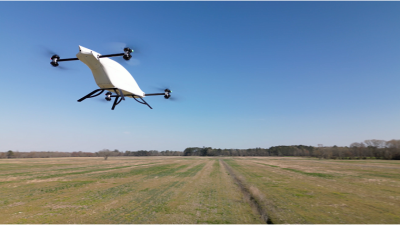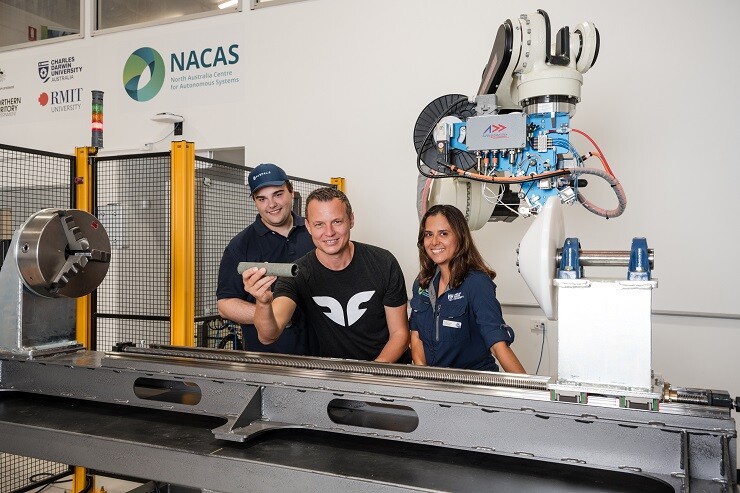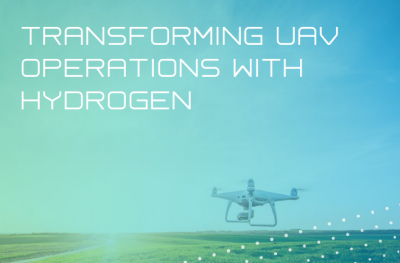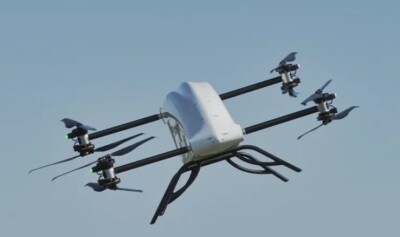Blueflite is set to address the growing global demand for safe and reliable storage of hydrogen fuels for unmanned aerial vehicles (UAVs) through a collaborative  early-stage project supported by the Northern Territory (NT) Government in Australia. The ambitious project, which will also see blueflite open its Darwin-based premises, seeks to develop lightweight hydrogen containers using Advanced Fiber Placement (AFP) technology pitched squarely at the underserved, long-range, UAV sector.
early-stage project supported by the Northern Territory (NT) Government in Australia. The ambitious project, which will also see blueflite open its Darwin-based premises, seeks to develop lightweight hydrogen containers using Advanced Fiber Placement (AFP) technology pitched squarely at the underserved, long-range, UAV sector.
The collaboration will see blueflite leverage Charles Darwin University’s (CDU) innovative additive manufacturing capabilities, including the use of an industrial robot with advanced AFP capabilities. The AFP robot at CDU is the only one of its kind in Australia and offers a significant improvement over traditional methods of composite vessel manufacture.
Long-range UAVs play a crucial role in numerous sectors, including medical, agricultural, services and mining industries – particularly in geographically isolated or vast regions such as the NT. In the medical field, they facilitate quick and efficient transport of medical supplies, vaccines, and even emergency medical services to remote areas, improving healthcare accessibility. In agriculture, UAVs can transform crop monitoring, precision agriculture, and pest control, leading to increased efficiency and sustainable farming practices.
 Such is the growth trend in drone use that according to a recent Airservices Australia report, the number of drone flights (single take-off and landing) will increase to approximately 60.4 million by 2043 – up from 1.5 million in 2024. This increase is driven primarily by drones being used for goods deliveries – an industry that is projected to grow exponentially over the next 20 years.
Such is the growth trend in drone use that according to a recent Airservices Australia report, the number of drone flights (single take-off and landing) will increase to approximately 60.4 million by 2043 – up from 1.5 million in 2024. This increase is driven primarily by drones being used for goods deliveries – an industry that is projected to grow exponentially over the next 20 years.
In all, the $30 billion (USD) global drone market – of which long-range drones represent almost a quarter of the market – is set to grow to $223 billion by 2033. With increasing demands for long range flights driving interest in new forms of fuel such as hydrogen, blueflite plans to offer a scalable solution for all manner of UAV applications. The integration of hydrogen fuel cell technology into UAVs has the potential to enhance range and efficiency of craft, as running on hydrogen rather than lithium-ion batteries is expected to increase range by 700 per cent.
Chief Executive Officer of Blueflite, Frank Noppel said “UAVs have the potential to shrink distances, increase services in remote areas and decarbonise last mile transportation. In conjunction with CDU, H3 Dynamics and support from the Northern Territory Government we will establish a composite hydrogen tank manufacturing capability that does not exist in Australia and integrate it into our proven UAV platform.”
Working alongside CDU’s Energy Resource Institute, the project will also conduct trials for remote site hydrogen generation and filling.
AMGC’s Northern Territory Director, Charmaine Phillips said: “The Northern Territory is ideally positioned to assist blueflite and its collaborators to succeed, not only do we have the right geographical conditions, but we also have the right support mechanisms and innovation ecosystem. Projects like this really lift our manufacturing industries eyes beyond the horizon and demonstrate our role in the transition to renewable energy.”
Source: Press Release
















Comments